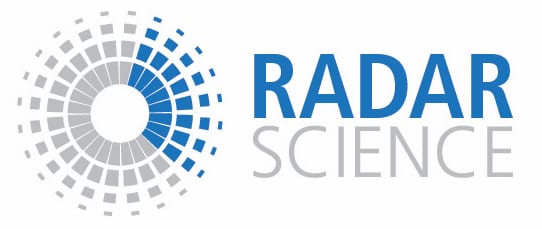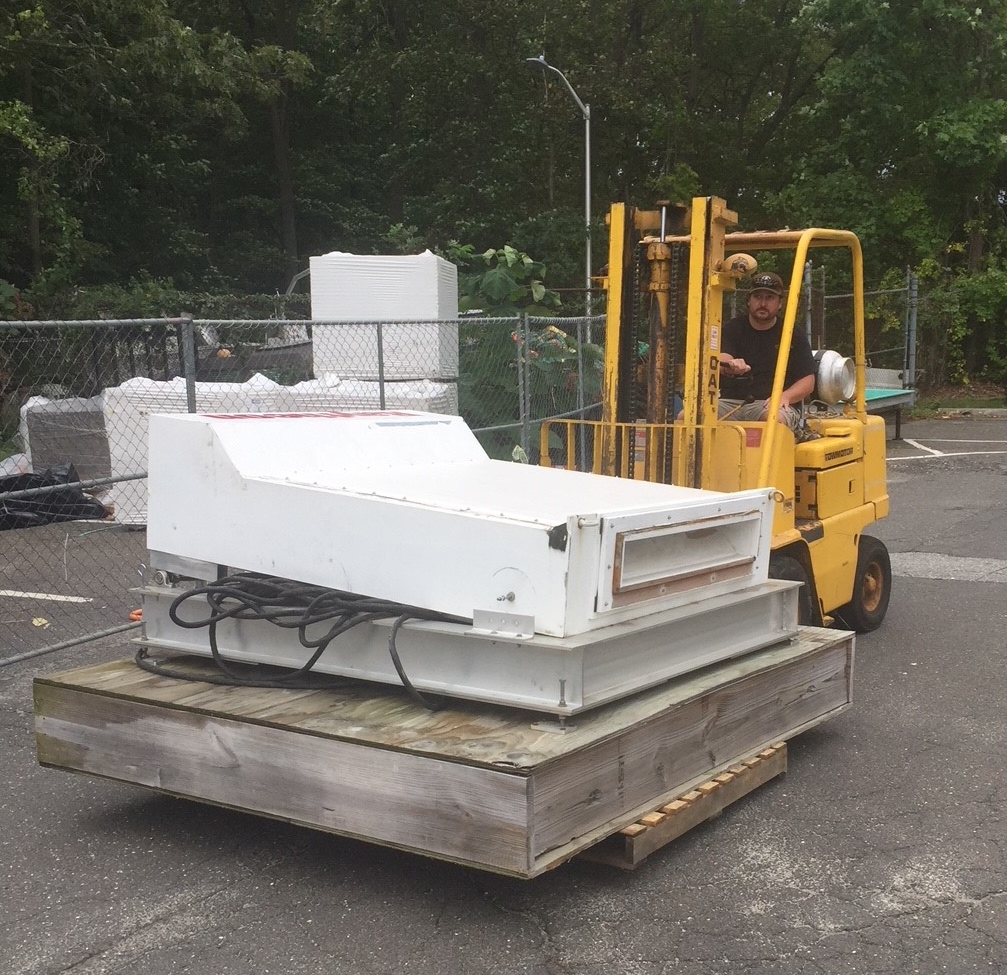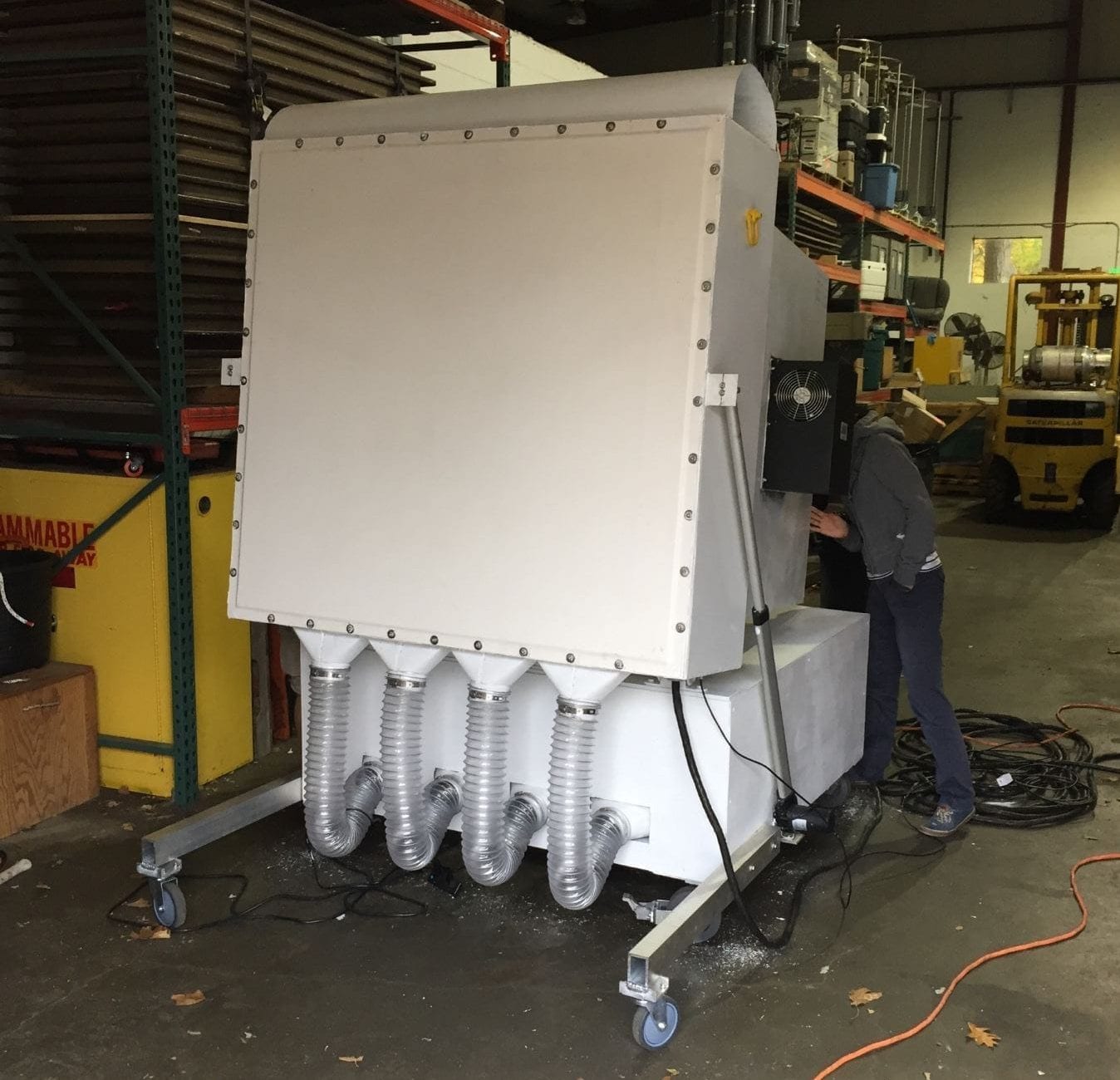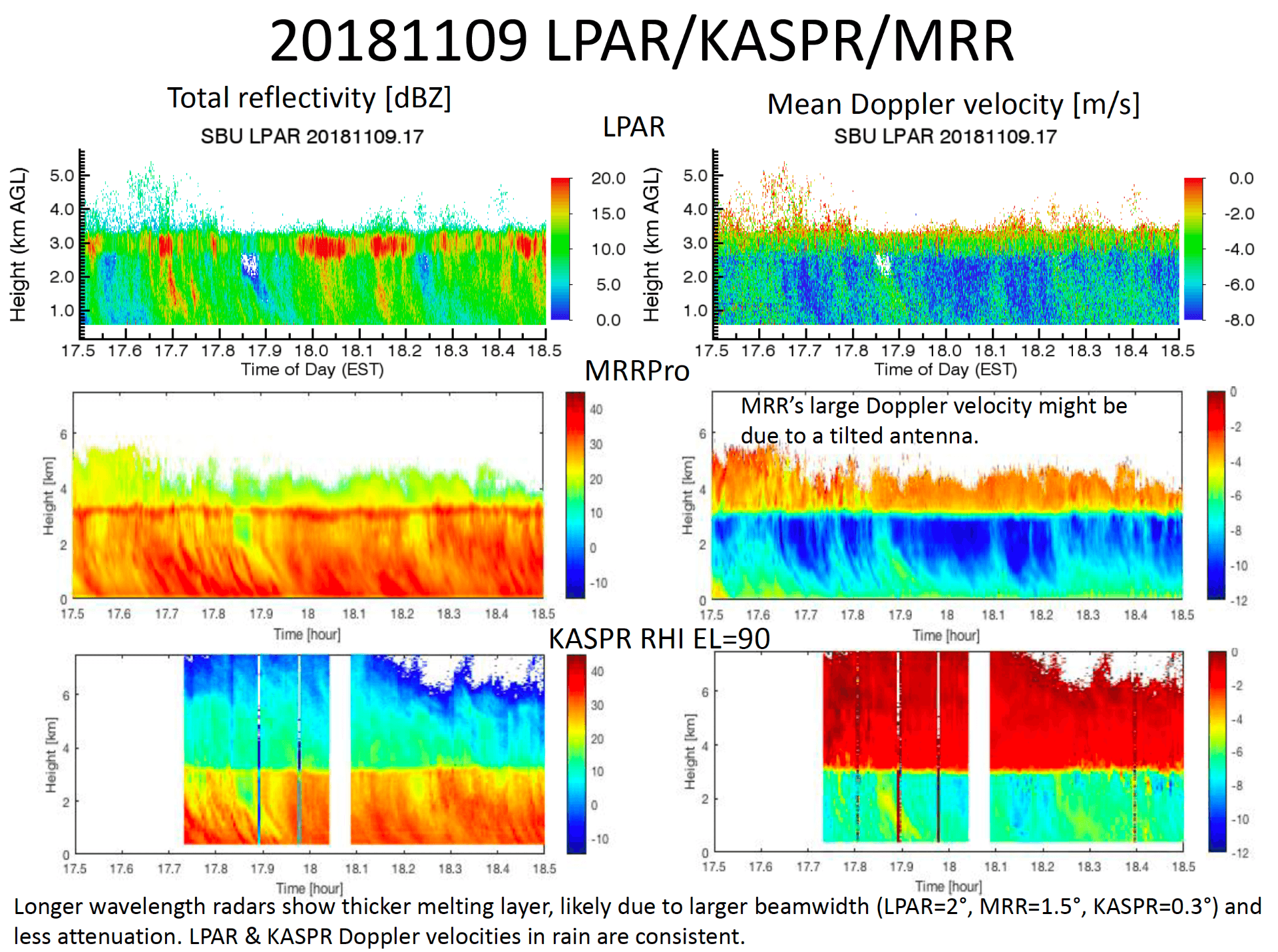Low cost, low power X-band phased array radar (LPAR) is an enabling technology for future deployment of distributed short-range radar networks. Two-dimensional high-speed (inertia-less) beam steering combined with dual polarization, programmable adaptive waveforms, and the ability to combine multiple radars into networks is leading to new atmospheric science research opportunities related to hazardous storm forecasting and response, understanding cloud physics, water resource management, monitoring the movement and dispersal of hazardous plumes, and other areas.
Raytheon Company recently established a partnership with the Radar Science group at the School of Marine and Atmospheric Sciences at Stony Brook University (SBU) to advance the understanding of phase-phase radar technology applied to atmospheric and airborne sensing. As part of its research partnership with Raytheon, the Radar Science group academic received a version 1 Low Power Phased Array Radar (LPAR v1). The system arrived at Stony Brook University in the fall of 2017.
Fig. 1 The Raytheon LPAR v1 system was delivered to SBU on Sept. 20, 2017
The LPAR v1 is an active electronically scanned antenna array design developed by Raytheon that is based on manufacturing processes similar to those for making low-cost computer boards. Details about the LPAR v1 system can be found here.
The system has been packaged in a new weatherproof enclosure and scanning capability in elevation has been added (Fig. 2). The transmit frequency of the radar is 9.25 GHz. FCC recently approved us to operate the system in NY State including the NYC metro area and airports. The system is fully functional and operational at the radar observatory. Figure 3 show examples of precipitation observations on November 9, 2018 from the LPAR in vertical pointing model (top row), the MRR-PRO (middle panel) and the KASPR (bottom row).
Our group acquired a powerful diesel generator integrated a new rack mounted computer system to control the LPAR and store/display the radar observations. The LPAR will be operated all winter from the radar observatory for winter weather studies. The mobile truck has been ordered by the Research Foundation of Stony Brook University.
References:
- Drake, J. Bourgeois, and D. McLaughlin, “X-Band Phased Array Radar: Current Radar Performance and Plans for Wake Vortex Experimentation,” WakeNet Europe Workshop, France, 2014
- Kollias, P., D. J. McLaughlin, S. Frasier, M. Oue, E. Luke and A. Sneddon, “Advances and applications in low-power phased array X-band weather radars,” 2018 IEEE Radar Conference (RadarConf18), Oklahoma City, OK, 2018, pp. 1359-1364. doi: 10.1109/RADAR.2018.8378762
- Powell, R. Moro, and A. Hopf, “Low Power X-Bad Phased Array Radar: A High Resolution UAV and Weather Detection System,” Friends and Partners in Aviation Weather (FPAW), November 18 – 19, 2015, Las Vegas.




